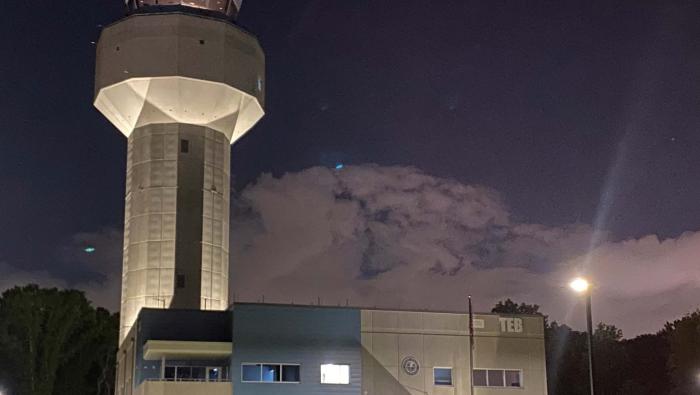In response to questions submitted by members of the House subcommittee on space and aeronautics, the Government Accountability Office (GAO) said recently that a cost estimate for the next-generation air transportation system (NGATS) is critical since Congress needs to understand what is necessary to fund the ATC system of the future.
“Given the 2025 time frame and the complexity of the effort,” the GAO wrote, “it is important that the JPDO [Joint Planning and Development Office] be able to withstand changes in staffing and administrations.” It added that institutionalizing the collaborative process in the short term will strengthen its ability to achieve success in the long term.
Congress created the JPDO, which is managed jointly by the FAA and NASA. It is supported by the Departments of Commerce, Defense, Homeland Security, Transportation and the White House Office of Science and Technology. The GAO was responding to written questions submitted by members of Congress after a late-March subcommittee hearing on “The Future of Air Traffic Control: The R&D Agenda.”
Capacity Concerns Raised
Another near-term challenge, according to the GAO, is effectively communicating the importance of the transition from the current system to NGATS and educating the American public about the consequences of not making the transition.
For example, if NGATS is expected to handle a three-fold increase in traffic by 2025, the JPDO will have to consider several issues related to airport capacity. Its evaluation and analysis division has found that as they reach their saturation points, the nation’s 35 largest airports will be a critical factor
in limiting the capacity of the
National Airspace System (NAS). JPDO models indicate that capacity at almost half of these 35 airports will be limited.
“While JPDO expects to add runways at some of these large airports and increase the use of nearby secondary airports,” the GAO warned, “JPDO anticipates that this solution still leaves airport capacity 12 percent below that needed to accommodate a three-fold increase.
“Moreover, increased use of secondary airports could raise environmental and infrastructure issues. For example, local residents could object to increased noise, and travelers could have concerns about transportation to and from these airports.”
The JPDO’s airport integrated product team (IPT) has been considering how to expand airport capacity. While the JPDO and the FAA are integrating the NGATS plan and the FAA’s Operational Evolution Plan, an official told the GAO that the ability of the JPDO to enhance airport capacity is still limited because growth decisions are made at the state and local level. The official also noted that the JPDO cannot channel federal funds from the Airport Improvement Program to airports where capacity expansion is needed most.
Rep. Ken Calvert (R-Calif.), chairman of the space and aeronautics subcommittee, asked the GAO how NGATS would treat general aviation and whether some airplanes will be allowed to fly VFR.
According to the GAO, it is likely that decisions on concepts and policies relating to general aviation would be made jointly by the JPDO, its senior policy committee and the FAA to address concerns such as VFR versus IFR. New technologies would require testing or demonstrating for use in the NAS. Also, the FAA would have to start developing the regulation for implementation at the appropriate point so that the regulation would be available at the appropriate time.
For Fiscal Year 2007 (which begins October 1), the JPDO’s IPTs identified a number of “jump start” initiatives, including putting ADS-B and system-wide information management on the fast track. These initiatives were included in agency budget guidance that the senior policy committee approved. In the future, such decisions will flow from the “enterprise architecture”–a blueprint to guide NGATS development.
Concerning general aviation, JPDO officials noted that NGATS has the potential to provide significant benefits to the community. However, they said that it is difficult to specify exactly what decisions the senior policy committee would have to make concerning general aviation.
In response to a question from Rep. Mark Udall (D-Colo.), the ranking minority member on the subcommittee, about R&D challenges, the GAO said that the JPDO will need to fully understand and address the human factors associated with automation. For example, using automation raises questions about the extent to which the system will be automated and whether controllers will be able to accept or reject automated commands.
Additionally, the human-factors issues related to changing the workload of air traffic controllers and pilots is critical because NGATS envisions shifting some of a controller’s workload to pilots. Although the JPDO has begun to model how shifts in air traffic controllers’ workloads would affect their performance, it has not yet begun to model how this shift would affect pilot performance.
Another challenge for the JPDO is obtaining the resources necessary to complete the R&D of technologies that NASA has started. With the space agency’s new focus on fundamental research, it does not intend to develop technology to the level that it did in the past.
“JPDO will have to fill this gap by leveraging the resources necessary to further develop, validate and demonstrate these technologies,” the GAO told Udall. “We plan to explore how NASA’s new focus on fundamental aeronautics research will impact the transition to NGATS as part of our ongoing work.”







